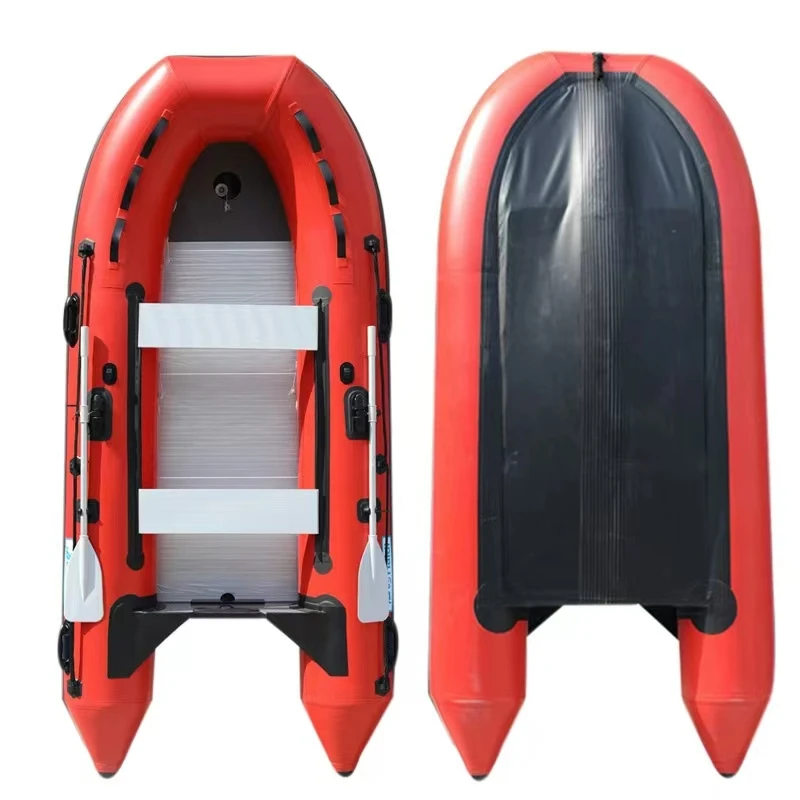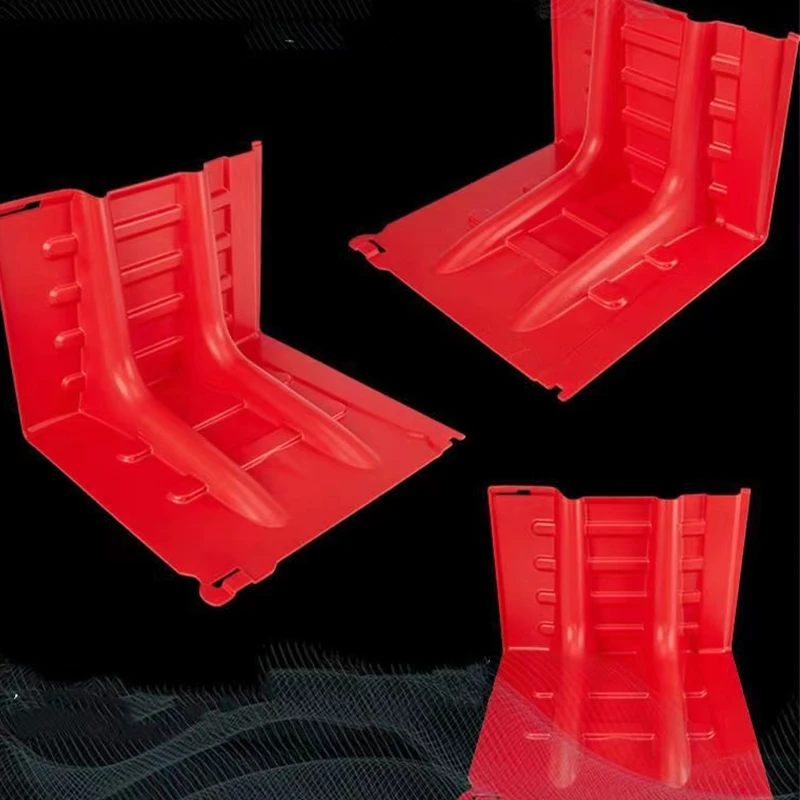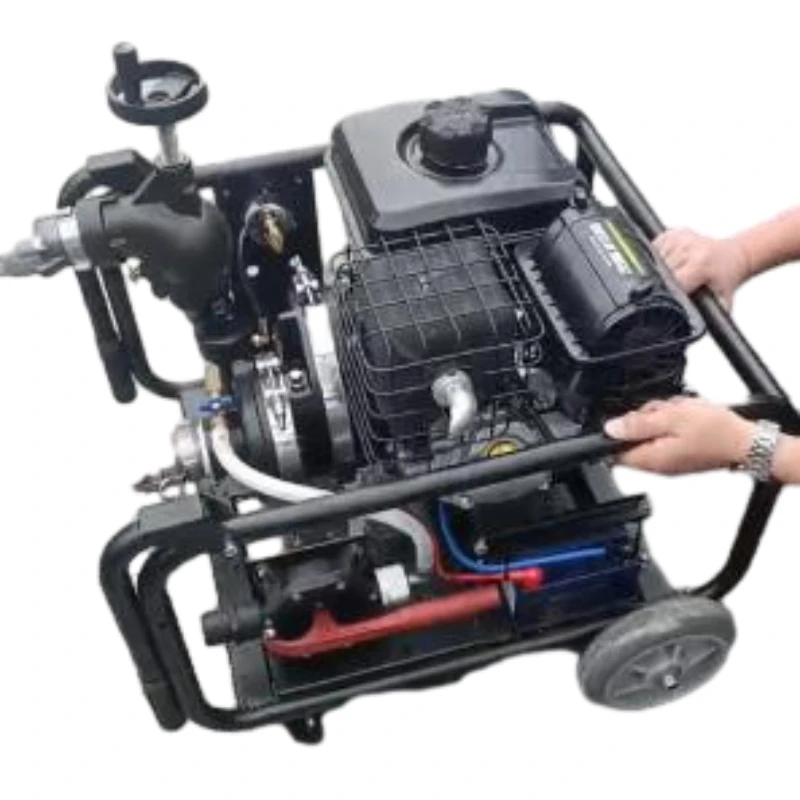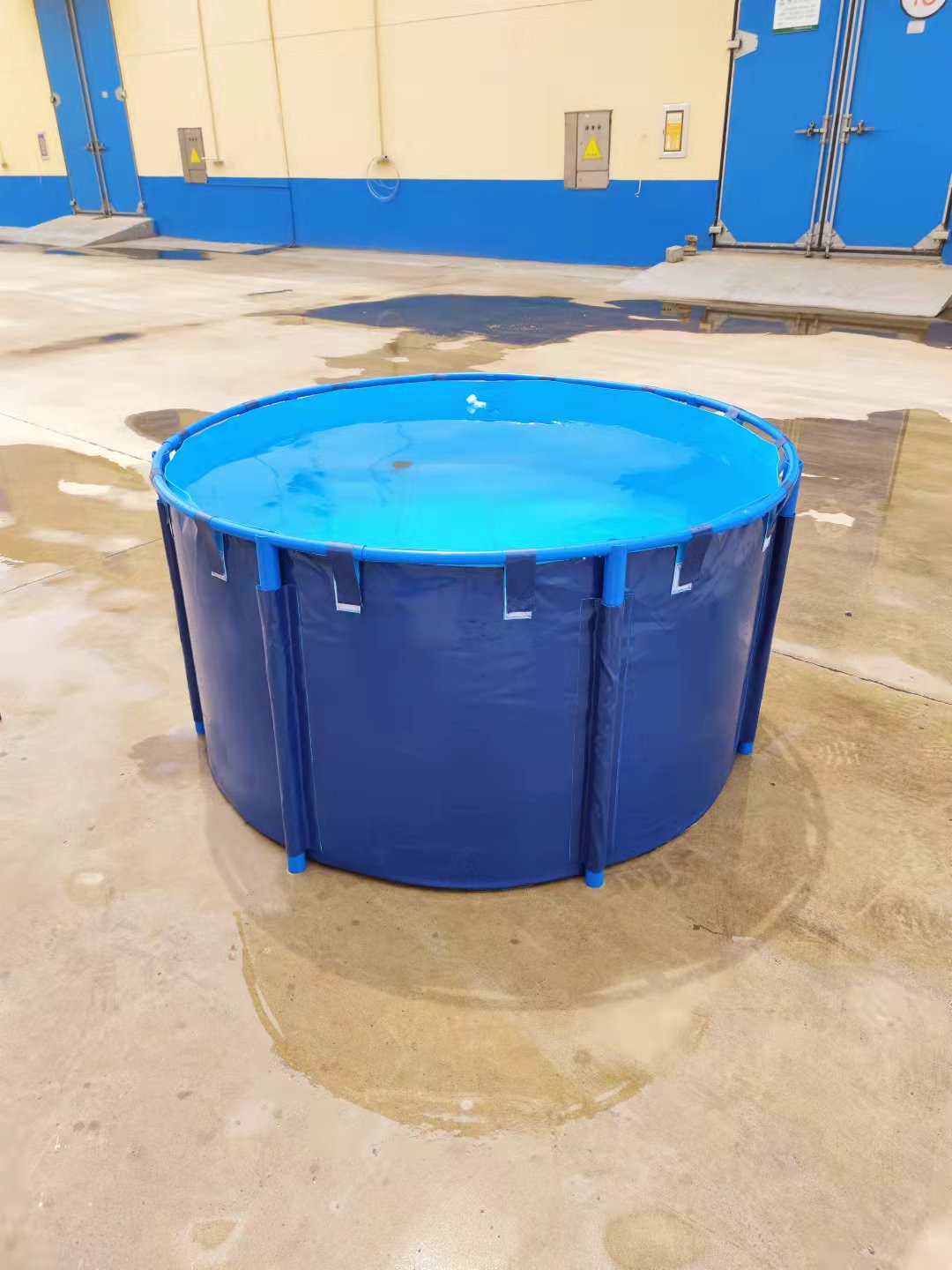Industry Trends and the Evolution of High-Pressure Fire Safety
The landscape of industrial fire safety is constantly evolving, driven by increasing regulatory scrutiny, the expansion of complex industrial infrastructure, and the inherent risks associated with modern manufacturing and processing facilities. Traditional fire suppression systems often face limitations in reach, pressure delivery, and mobility, especially in vast or remote industrial sites. This has led to a significant demand for advanced fire fighting solutions that can address these challenges head-on. Key trends include the shift towards more mobile and adaptable equipment, the integration of smart monitoring and control systems, and the imperative for faster, more effective response times over vast distances.
In response to these demands, innovative technologies have emerged, none more critical than the development of the Movable ultra-long distance high pressure fire pump. This class of equipment is specifically engineered to provide unparalleled firefighting capabilities, bridging the gap where conventional systems fall short. Its design prioritizes robust performance, operational flexibility, and the ability to deliver water or foam solutions with significant force and reach, critical for protecting large-scale assets in petrochemical plants, refineries, power generation facilities, and extensive logistics hubs. The industry trend clearly points towards solutions that minimize deployment time, maximize suppression effectiveness, and ensure the safety of personnel and critical infrastructure, even in the most challenging scenarios.

Technical Specifications and Core Parameters
The engineering behind a Movable ultra-long distance high pressure fire pump is a testament to precision and resilience. These units are designed to operate under extreme conditions, delivering a powerful stream over distances often exceeding 100 meters, or even several hundred meters with specialized nozzles and booster systems. The core components, including the pump impeller, casing, shaft, and sealing systems, are typically manufactured from high-grade, corrosion-resistant materials such as stainless steel (e.g., Duplex stainless steel or 316L) or bronze alloys, ensuring durability and longevity in aggressive environments, including those exposed to saltwater or corrosive chemicals.
Power is supplied by robust industrial diesel engines, often compliant with Tier 3 or Tier 4 emissions standards, selected for their reliability and sustained high-power output necessary to drive multi-stage centrifugal pumps. The pump assembly itself is frequently a multi-stage centrifugal type, optimized for high head (pressure) and moderate to high flow rates. Advanced fluid dynamics modeling is employed in impeller design to maximize hydraulic efficiency, reduce cavitation, and ensure stable performance across the operating curve. Monitoring systems include digital gauges for pressure, flow, engine RPM, temperature, and fuel levels, often with telemetry options for remote oversight. The entire unit is typically mounted on a heavy-duty, road-legal trailer, equipped with robust suspension and braking systems for rapid deployment.
Typical Product Specification Table
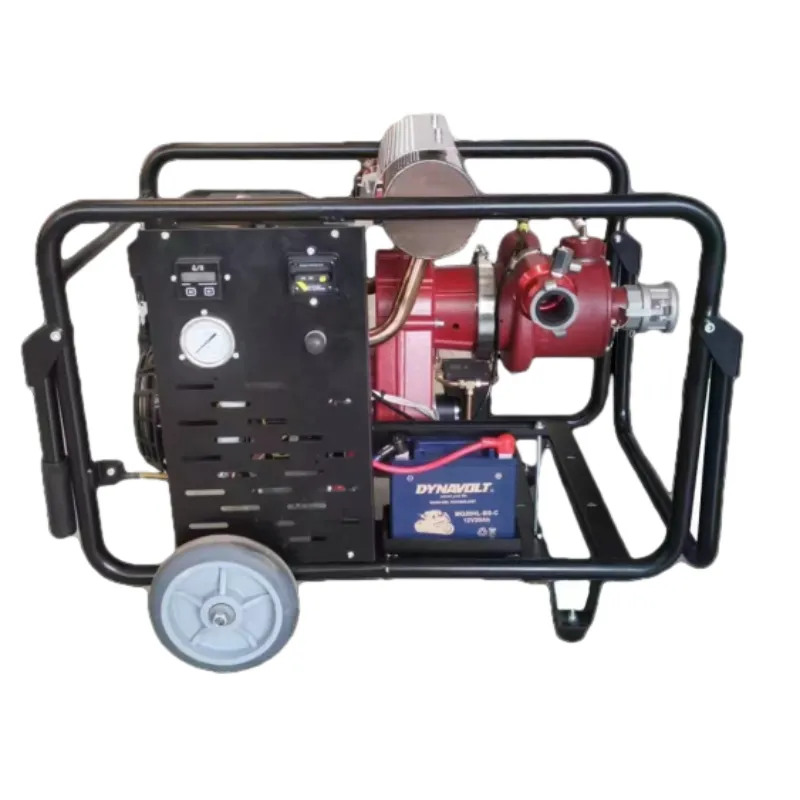
Manufacturing Process and Quality Assurance
The manufacturing of a Movable ultra-long distance high pressure fire pump is a meticulous process, adhering to stringent quality control standards to ensure reliability and performance in critical situations. It encompasses several key stages, from material selection to final assembly and rigorous testing.
Process Flow:
1. Material Selection & Sourcing
High-grade raw materials (e.g., Duplex stainless steel, 316L for pump wetted parts; high-strength structural steel for chassis) are sourced from certified suppliers. Materials undergo chemical composition and mechanical property testing to ensure compliance with standards like ASTM, EN, or JIS.
2. Component Manufacturing (Casting, Forging, CNC Machining)
Pump casings are often produced via precision casting, followed by heat treatment for material integrity. Impellers and shafts may be forged for superior strength, then subjected to multi-axis CNC machining for exact tolerances and optimal hydraulic profiles. Other components are fabricated using laser cutting, bending, and welding techniques.
3. Surface Treatment & Coating
Critical components receive specialized surface treatments, such as passivation for stainless steel, or multi-layer epoxy coatings for carbon steel parts. This enhances corrosion resistance, extending the service life of the pump even in harsh marine or chemical environments.
4. Assembly & Integration
Expert technicians assemble the pump, engine, control system, and trailer chassis. This stage involves precise alignment, connection of hydraulic and electrical systems, and installation of fuel tanks and auxiliary equipment.
5. Performance Testing & Certification
Each assembled unit undergoes extensive testing. This includes hydrostatic pressure testing, cavitation tests, endurance runs, and performance curve verification against design specifications. Compliance with international standards such as ISO 9001 (Quality Management), ISO 14001 (Environmental Management), NFPA 20 (Standard for the Installation of Stationary Pumps for Fire Protection), and relevant ANSI/UL standards for fire pumps is rigorously checked. Typical service life for well-maintained units is 15-20 years.
The stringent adherence to these processes ensures that each Movable ultra-long distance high pressure fire pump delivers exceptional energy saving through optimized hydraulic efficiency, and superior corrosion resistance, paramount for reliable operation in demanding industries like petrochemical and water supply & drainage.

Application Scenarios and Target Industries
The versatility and power of the Movable ultra-long distance high pressure fire pump make it indispensable across a spectrum of critical industries where fire risks are significant and conventional fire suppression methods are inadequate. These units are designed for rapid deployment and sustained operation in diverse, challenging environments.
- Petrochemical and Oil & Gas Industry: In refineries, chemical plants, and oil storage facilities, the risk of large-scale hydrocarbon fires is ever-present. These pumps are crucial for protecting vast tank farms, processing units, and pipelines, where fires can escalate rapidly and require immediate, high-volume, high-pressure intervention from a safe distance. Their corrosion resistance is vital in these often chemically aggressive environments.
- Metallurgy and Heavy Manufacturing: Steel mills, foundries, and heavy machinery plants involve extreme temperatures, combustible materials, and complex layouts. A movable fire pump provides the flexibility to address fires in different sections of a sprawling facility, delivering the necessary power to suppress fires involving molten metals or highly flammable coolants.
- Power Generation Facilities: Nuclear, thermal, and hydropower plants contain critical infrastructure and potentially flammable materials (e.g., lubricants, coal dust). The ability to project water or foam over ultra-long distances is essential for protecting turbines, transformers, and switchyards, particularly when fixed systems may be compromised or insufficient.
- Port Authorities and Maritime Operations: Large port facilities with extensive docks, warehouses, and container111 terminals, as well as ship-to-shore operations, face unique fire challenges. These pumps can quickly respond to vessel fires, warehouse blazes, or fuel spills, offering effective suppression even in windy coastal conditions.
- Mining Operations: Open-pit and underground mines present hazardous environments with combustible materials and limited access. Mobile high-pressure pumps can support fixed systems, extinguish fires in remote processing areas, or assist in containing dust explosions.
- Water Supply & Drainage Infrastructure: Beyond direct firefighting, these pumps can be critical for emergency dewatering operations, managing floods, or providing temporary water transfer solutions for municipal water systems during crises. Their robust design makes them suitable for continuous operation.
- Logistics Parks and Large Warehouses: Modern logistics centers often store vast quantities of diverse goods, making fire suppression complex. The mobility of these pumps allows for strategic positioning around large structures to combat widespread fires, reaching areas inaccessible to smaller equipment.
In each of these scenarios, the primary advantage is the ability to project suppression agents from a safe distance, protecting personnel while effectively combating large-scale, high-intensity fires. This capability reduces risks, minimizes property damage, and ensures operational continuity for critical infrastructure.
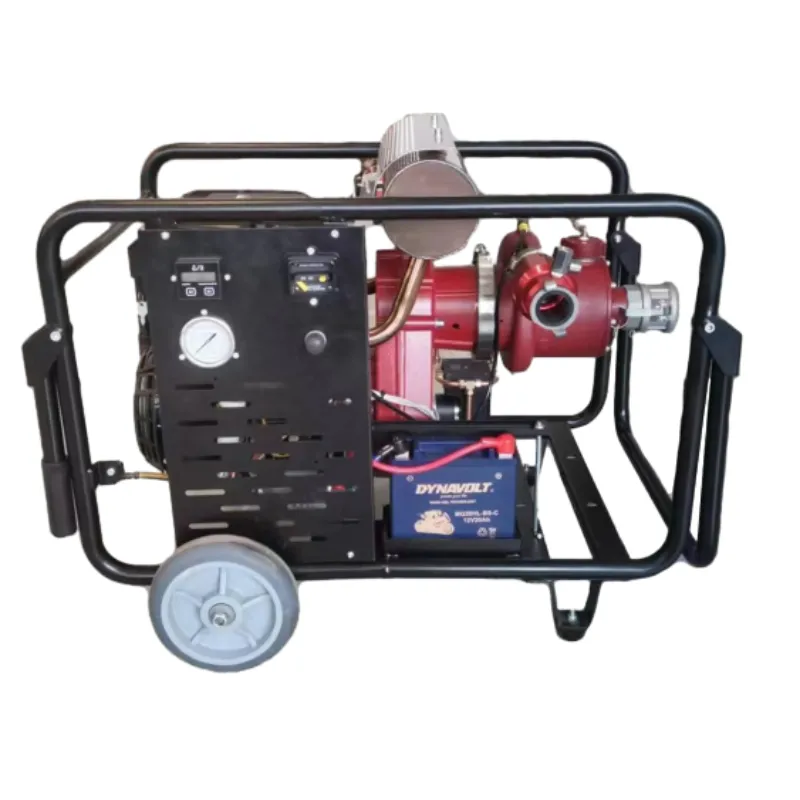
Technical Advantages and Vendor Comparison
The distinct technical advantages of a Movable ultra-long distance high pressure fire pump set it apart from standard firefighting equipment. These advantages directly translate into superior operational effectiveness and enhanced safety for industrial applications.
Key Technical Advantages:
- Extended Reach and Pressure: Capable of projecting water or foam hundreds of meters, effectively suppressing fires in remote areas or large structures without requiring close proximity, thus minimizing personnel exposure to heat and smoke.
- High Flow Rate & Fire Suppression Power: Delivers substantial volumes of extinguishing agent at high pressure, ensuring rapid knockdown of large, intense fires, and effective cooling of surrounding structures.
- Rapid Mobility and Deployment: Trailer-mounted design allows for quick relocation to different incident sites within a large complex or between facilities, significantly improving response times.
- Robust Construction and Durability: Built with heavy-duty components and corrosion-resistant materials, ensuring reliability and a long service life even under continuous operation and in harsh industrial environments.
- Versatility in Media: Designed to handle various extinguishing agents, including fresh water, seawater, and foam concentrates, making them suitable for diverse fire classes (A, B, C).
- Self-Contained Operation: Equipped with onboard fuel tanks and independent power sources, allowing for prolonged operation without external utilities, crucial in emergency scenarios.
Vendor Comparison: Key Differentiators
When selecting a Movable ultra-long distance high pressure fire pump, decision-makers must consider not only the base technical specifications but also the underlying engineering, material quality, and after-sales support offered by different vendors. While many manufacturers offer similar-looking products, critical distinctions emerge in performance, reliability, and total cost of ownership.
Choosing a reputable vendor, often one with ISO/FDA certifications and a track record of serving major industrial clients, ensures access to superior engineering, higher quality components, and reliable long-term support, ultimately reducing operational risks and extending equipment lifespan.
Customized Solutions and Real-World Case Studies
Recognizing that no two industrial sites are identical, leading providers of Movable ultra-long distance high pressure fire pump systems offer extensive customization options. These tailored solutions ensure that the equipment perfectly integrates with existing safety protocols and addresses specific site challenges, optimizing both performance and return on investment.
Customization Capabilities:
- Flow and Pressure Matching: Pumps can be specified with varying flow rates (e.g., 60 L/s to 300 L/s) and pressure outputs (10 bar to 25 bar+) to match the specific hazard classification and desired fire suppression capability.
- Engine Configuration: Choice of diesel engine manufacturers (e.g., Cummins, Deutz, Caterpillar) with different power ratings and emissions compliance (e.g., EU Stage V, US EPA Tier 4 Final) to meet regional regulations and client preferences.
- Trailer Design: Custom trailer options include heavy-duty off-road capability, specialized hitches, integrated foam tanks, emergency lighting, and tool compartments.
- Control Systems: Advanced PLC-based control panels with touch screen interfaces, remote start/stop functionality, telemetry for real-time monitoring, and integration with site-wide SCADA systems.
- Material Specification: Tailored material choices for wetted parts (e.g., Super Duplex stainless steel for extreme corrosion resistance in chemical plants or offshore platforms) and coatings.
- Nozzle and Monitor Systems: Integration with specific firefighting monitors (manual or remote-controlled) and nozzles (fog, stream, foam) to achieve desired throw distance, pattern, and agent type.
Application Case Studies (Examples):
- Petrochemical Plant in the Middle East: A major refinery faced challenges protecting its extensive crude oil storage tank farm, where fire scenarios could quickly exceed the capabilities of fixed systems due to large tank diameters and distances. A customized Movable ultra-long distance high pressure fire pump unit with a 250 L/s flow rate and 20 bar pressure, equipped with a long-range foam monitor, was deployed. The unit’s rapid mobility allowed it to be positioned optimally around the perimeter, providing effective cooling and foam blanketing for adjacent tanks from a safe distance, demonstrating superior flexibility and protection during simulated emergencies.
- Large-Scale Power Plant in Southeast Asia: An expansive coal-fired power plant required enhanced fire protection for its coal conveyors and turbine halls, which span considerable distances. The challenge was maintaining fire suppression capability across these distances while managing dense dust environments. A specialized movable fire pump with a multi-stage pumping system delivered water at 15 bar over 150 meters, effectively suppressing localized coal dust fires and providing boundary cooling for critical equipment. Its robust filtration system ensured reliable operation despite high levels of airborne particulates.
- Container Port Terminal in Europe: To mitigate risks associated with container111 stack fires and fuel spills, a major port invested in a custom Movable ultra-long distance high pressure fire pump. This unit featured corrosion-resistant components suitable for a maritime environment and an integrated proportioning system for seawater foam operations. Its rapid deployment capability was crucial for reaching fires deep within container111 stacks, reducing response times and minimizing potential cargo losses. Customer feedback highlighted the system's ease of operation and its critical role in enhancing overall port safety.
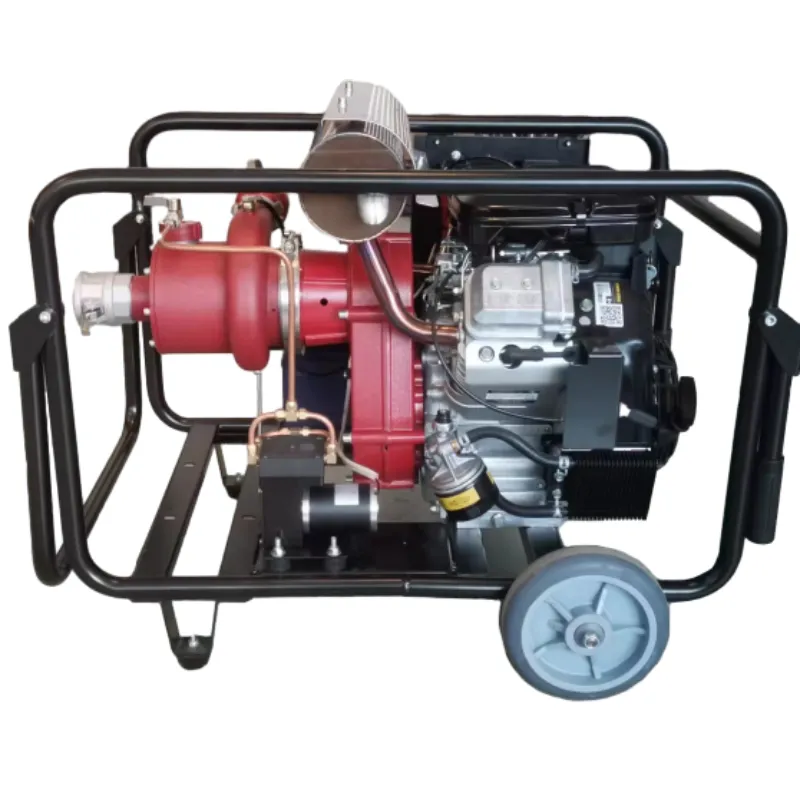
Ensuring Trust: FAQ, Lead Time, Warranty, and Support
Building trust with B2B clients extends beyond technical specifications and performance; it involves transparent communication regarding product lifecycle, support, and commitments. We prioritize a customer-centric approach to ensure complete satisfaction and operational readiness for every Movable ultra-long distance high pressure fire pump.
Frequently Asked Questions (FAQ):
- Q: What is the typical service life of your fire pumps?
A: With proper maintenance and adherence to service schedules, our Movable ultra-long distance high pressure fire pump units are designed for a service life of 15-20 years. Critical components are selected for their durability. - Q: Can these pumps handle corrosive agents like seawater or specific chemicals?
A: Yes, we offer specific material configurations (e.g., Duplex stainless steel, specialized coatings) for wetted parts to ensure compatibility and longevity when pumping corrosive agents, including seawater and certain industrial chemicals. - Q: Are your units compliant with international fire safety standards?
A: Absolutely. Our pumps can be designed and tested to meet or exceed relevant international standards such as NFPA 20, ISO 9906, and regional certifications (e.g., CE, UL, FM) as required by the project. - Q: What kind of training is provided for operation and maintenance?
A: We provide comprehensive operator and maintenance training programs, either on-site or at our facility. This includes hands-on instruction for startup, operation, troubleshooting, and routine maintenance to ensure optimal performance and safety.
Lead Time & Fulfillment Details:
Standard configurations for our Movable ultra-long distance high pressure fire pump typically have a lead time of 10-14 weeks from order confirmation to factory acceptance testing (FAT). Highly customized solutions may require 16-20 weeks, depending on component availability and engineering complexity. We maintain transparent communication throughout the manufacturing process, providing regular updates on production milestones and estimated delivery dates. Expedited options may be available upon request, subject to material and production scheduling.
Warranty Commitments:
All new Movable ultra-long distance high pressure fire pump units come with a standard 12-month warranty covering manufacturing defects and component failures under normal operating conditions. Extended warranty options, covering up to 36 months, are available for purchase. Our warranty is backed by a commitment to prompt service and access to genuine OEM spare parts, minimizing downtime and ensuring long-term operational integrity.
Customer Support & After-Sales Service:
We understand that reliable after-sales support is paramount for mission-critical equipment. Our global service network provides comprehensive support, including:
- 24/7 technical hotline for immediate assistance and troubleshooting.
- On-site commissioning and startup support.
- Preventive maintenance contracts and routine servicing by certified technicians.
- Guaranteed availability of spare parts for the operational lifetime of the pump.
- Remote diagnostics and software updates for control systems.
Our dedicated team of engineers and service professionals ensures that your fire safety equipment remains in peak condition, providing peace of mind and unwavering protection.
Conclusion and Authoritative References
The Movable ultra-long distance high pressure fire pump represents a critical advancement in industrial fire safety technology. Its unparalleled capability for rapid deployment, high-pressure, and long-distance suppression offers a robust solution for protecting complex, large-scale industrial assets from catastrophic fire events. By combining superior engineering, advanced material science, and comprehensive after-sales support, these systems deliver not just fire protection, but strategic operational resilience.
For B2B decision-makers in high-risk industries, investing in such specialized equipment is an investment in safeguarding infrastructure, ensuring personnel safety, and maintaining business continuity. The flexibility, power, and reliability of these pumps underscore their indispensable role in modern industrial safety protocols.
References:
- NFPA 20: Standard for the Installation of Stationary Pumps for Fire Protection. National Fire Protection Association.
- ISO 9906: Rotodynamic pumps — Hydraulic performance acceptance tests — Grades 1, 2 and 3. International Organization for Standardization.
- API RP 2001: Fire Protection in Refineries. American Petroleum Institute.
- UL 448: Standard for Pumps for Fire-Protection Service. Underwriters Laboratories.
- FM Global Property Loss Prevention Data Sheet 2-0: Installation Guidelines for Automatic Sprinklers, Spray, and Foam-Water Systems.









